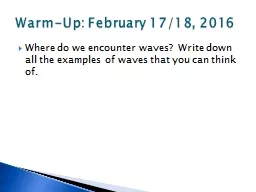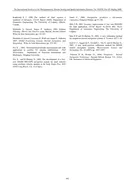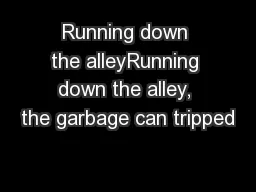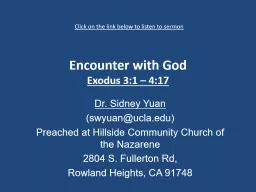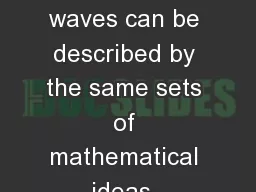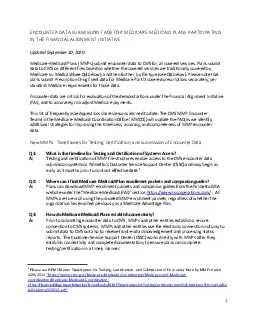PPT-Where do we encounter waves? Write down all the examples of waves that you can think
Author : medshair | Published Date : 2020-08-04
WarmUp February 1718 2016 Vibrations and Waves Chapter 14 A periodic motion repeats in a regular cycle Examples include Pendulums such as on a grandfather clock
Presentation Embed Code
Download Presentation
Download Presentation The PPT/PDF document "Where do we encounter waves? Write down..." is the property of its rightful owner. Permission is granted to download and print the materials on this website for personal, non-commercial use only, and to display it on your personal computer provided you do not modify the materials and that you retain all copyright notices contained in the materials. By downloading content from our website, you accept the terms of this agreement.
Where do we encounter waves? Write down all the examples of waves that you can think: Transcript
Download Rules Of Document
"Where do we encounter waves? Write down all the examples of waves that you can think"The content belongs to its owner. You may download and print it for personal use, without modification, and keep all copyright notices. By downloading, you agree to these terms.
Related Documents

